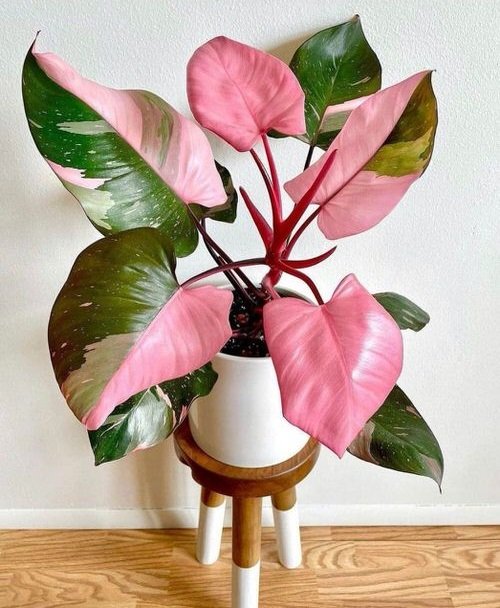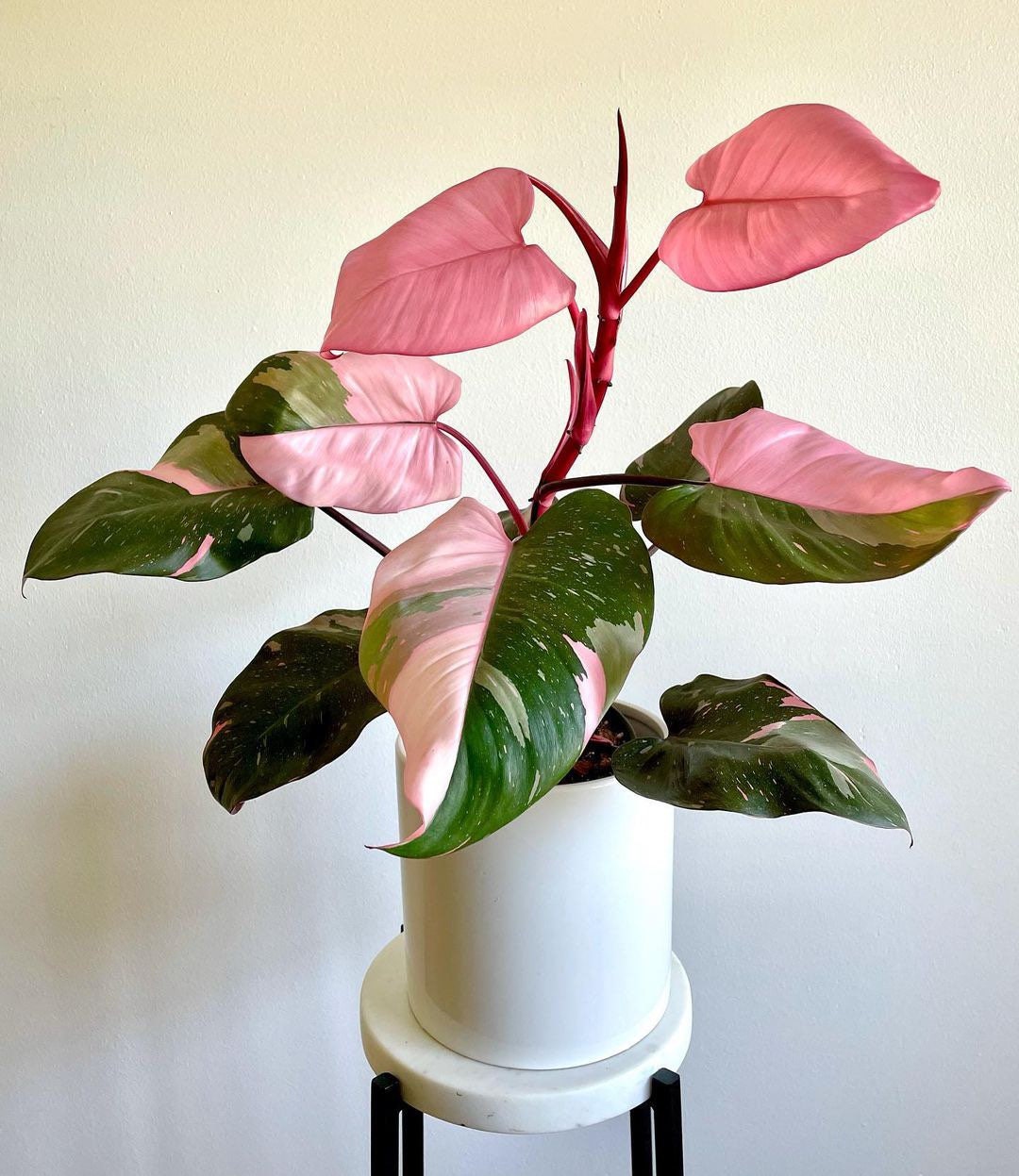Unlocking the Secrets of Philodendron Care
The Pink Princess Philodendron is a rare and stunning houseplant that boasts beautiful, variegated leaves with shades of pink, white, and green. To keep this plant thriving and maintain its vibrant color, it’s essential to understand its unique needs and requirements. Learning how to care for pink princess philodendron is crucial to ensure it receives the right amount of light, water, and nutrients. With proper care, this plant can grow rapidly and become a stunning centerpiece in any room. In fact, with the right techniques, you can encourage your Pink Princess to produce more vibrant colors and patterns, making it a true showstopper. By understanding the specific needs of this plant, you’ll be well on your way to becoming a philodendron expert and enjoying the many benefits of owning a thriving Pink Princess.
Creating the Ideal Environment for Your Pink Princess
To thrive, the Pink Princess Philodendron requires a specific set of environmental conditions. Lighting is one of the most critical factors, and it’s essential to provide bright, indirect light. Direct sunlight can cause the leaves to become scorched, so it’s best to place the plant near an east- or west-facing window. In terms of temperature, the ideal range is between 65°F to 75°F (18°C to 24°C), which is typical for most indoor spaces. Humidity is also crucial, and the Pink Princess prefers a humid environment with a relative humidity of 50% to 60%. To achieve this, you can place the plant on a tray filled with water and pebbles or use a humidifier. By creating an optimal environment, you’ll be well on your way to learning how to care for pink princess philodendron and enjoying its beautiful, vibrant colors.
Watering Wisdom: Avoiding Overwatering and Underwatering
Watering is a critical aspect of learning how to care for pink princess philodendron, as it can make all the difference in the plant’s health and appearance. Overwatering is a common mistake that can lead to root rot, while underwatering can cause the leaves to become wilted and discolored. To avoid these issues, it’s essential to check the soil moisture regularly. Stick your finger into the soil up to the first knuckle, and if the soil feels dry, it’s time to water. If it’s already moist, wait a few more days before watering again. Water your Pink Princess Philodendron thoroughly, making sure the pot drains well to prevent waterlogged soil. A good rule of thumb is to water every 1-2 weeks during the spring and summer months when the plant is actively growing, and every 3-4 weeks during the fall and winter when growth slows down. By developing a consistent watering schedule, you’ll be able to provide your Pink Princess with the right amount of moisture to thrive.
https://www.youtube.com/watch?v=24YYZG_CSds
Fertilizing for Optimal Growth and Color
Fertilization is a crucial aspect of learning how to care for pink princess philodendron, as it provides the necessary nutrients for healthy growth and vibrant color. A balanced fertilizer with a ratio of 20-20-20 (nitrogen-phosphorus-potassium) is ideal for the Pink Princess Philodendron. You can also use a fertilizer specifically formulated for tropical plants or houseplants. Apply the fertilizer during the growing season (spring and summer) every 4-6 weeks, and reduce the frequency to every 8-10 weeks during the dormant season (fall and winter). It’s essential to dilute the fertilizer to half the recommended strength to avoid burning the roots. You can also use organic fertilizers like compost or manure tea, which provide a slow release of nutrients and promote healthy soil microbiology. By fertilizing your Pink Princess Philodendron regularly, you’ll be able to promote healthy growth, encourage new leaves, and maintain its stunning color.
Pruning and Training: Shaping Your Pink Princess
Pruning is an essential aspect of learning how to care for pink princess philodendron, as it helps maintain the plant’s shape, promotes healthy growth, and encourages new leaves. To prune your Pink Princess Philodendron, start by removing any dead or damaged leaves or stems. This will help prevent the spread of disease and encourage the plant to focus its energy on healthy growth. Next, cut back any long stems to encourage branching and create a fuller plant. You can also prune your Pink Princess Philodendron to maintain a desired shape or size. When pruning, make clean cuts just above a node (where a leaf meets the stem), and use a pair of sharp, clean scissors or pruning shears to prevent spreading disease. Training your Pink Princess Philodendron is also important, as it helps the plant grow upwards and outwards. You can use a trellis or stake to support the plant, and gently tie the stems to the support using a soft material like twine or wire. By pruning and training your Pink Princess Philodendron regularly, you’ll be able to maintain its beautiful shape and promote healthy growth.
Pest Control and Common Problems: Identifying and Solving Issues
When it comes to learning how to care for pink princess philodendron, it’s essential to be aware of common pests and diseases that can affect the plant’s health. Some common pests that can infest the Pink Princess Philodendron include spider mites, mealybugs, and scale. To prevent infestations, inspect your plant regularly, and isolate new plants for a few weeks before introducing them to your collection. If you do encounter pests, treat the plant with insecticidal soap or neem oil according to the product’s instructions. Fungal diseases, such as root rot and leaf spot, can also affect the Pink Princess Philodendron. To prevent fungal diseases, ensure good air circulation, avoid overwatering, and remove any infected leaves or stems. If you notice any signs of disease, treat the plant with a fungicide and adjust its care routine accordingly. By being proactive and monitoring your plant’s health regularly, you can identify and solve issues before they become severe, and ensure your Pink Princess Philodendron remains healthy and thriving.
Propagation and Repotting: Expanding Your Philodendron Collection
Learning how to care for pink princess philodendron also involves understanding the process of propagation and repotting. Propagating new Pink Princess Philodendron plants from stem cuttings is a great way to expand your collection and share plants with friends. To propagate, cut 4-6 inch stem cuttings from the mother plant, removing lower leaves and leaving only a few at the top. Dip the cut end in rooting hormone and plant it in a well-draining potting mix. Keep the soil consistently moist and warm until roots develop. Once roots have developed, you can transplant the new plant into a larger pot. Repotting your Pink Princess Philodendron is also essential to provide fresh nutrients and a larger pot as the plant grows. Choose a pot that is only slightly larger than the previous one, and use a well-draining potting mix to prevent waterlogged soil. When repotting, gently remove the plant from its pot, taking care not to damage the roots. Trim away any dead or damaged roots, and plant the philodendron in its new pot, watering well to settle the soil. By propagating and repotting your Pink Princess Philodendron, you’ll be able to enjoy multiple plants and share your love for these beautiful plants with others.
Troubleshooting Common Issues: Expert Advice for a Thriving Pink Princess
When learning how to care for pink princess philodendron, it’s essential to be aware of common issues that may arise and know how to troubleshoot them. One common problem is leaf drop, which can be caused by overwatering, underwatering, or sudden changes in temperature or humidity. To address leaf drop, adjust your watering schedule, ensure consistent temperatures, and maintain optimal humidity levels. Another issue is yellowing leaves, which can be a sign of nutrient deficiency or too much direct sunlight. To resolve yellowing leaves, fertilize your plant with a balanced fertilizer, and provide filtered or indirect sunlight. Slow growth can also be a concern, often caused by inadequate light, insufficient fertilization, or root bound conditions. To promote healthy growth, ensure your Pink Princess Philodendron receives bright, indirect light, fertilize regularly, and repot your plant as needed. By being proactive and addressing common issues promptly, you can prevent more severe problems from developing and keep your Pink Princess Philodendron thriving. Remember, understanding how to care for pink princess philodendron is key to enjoying a healthy and vibrant plant.







